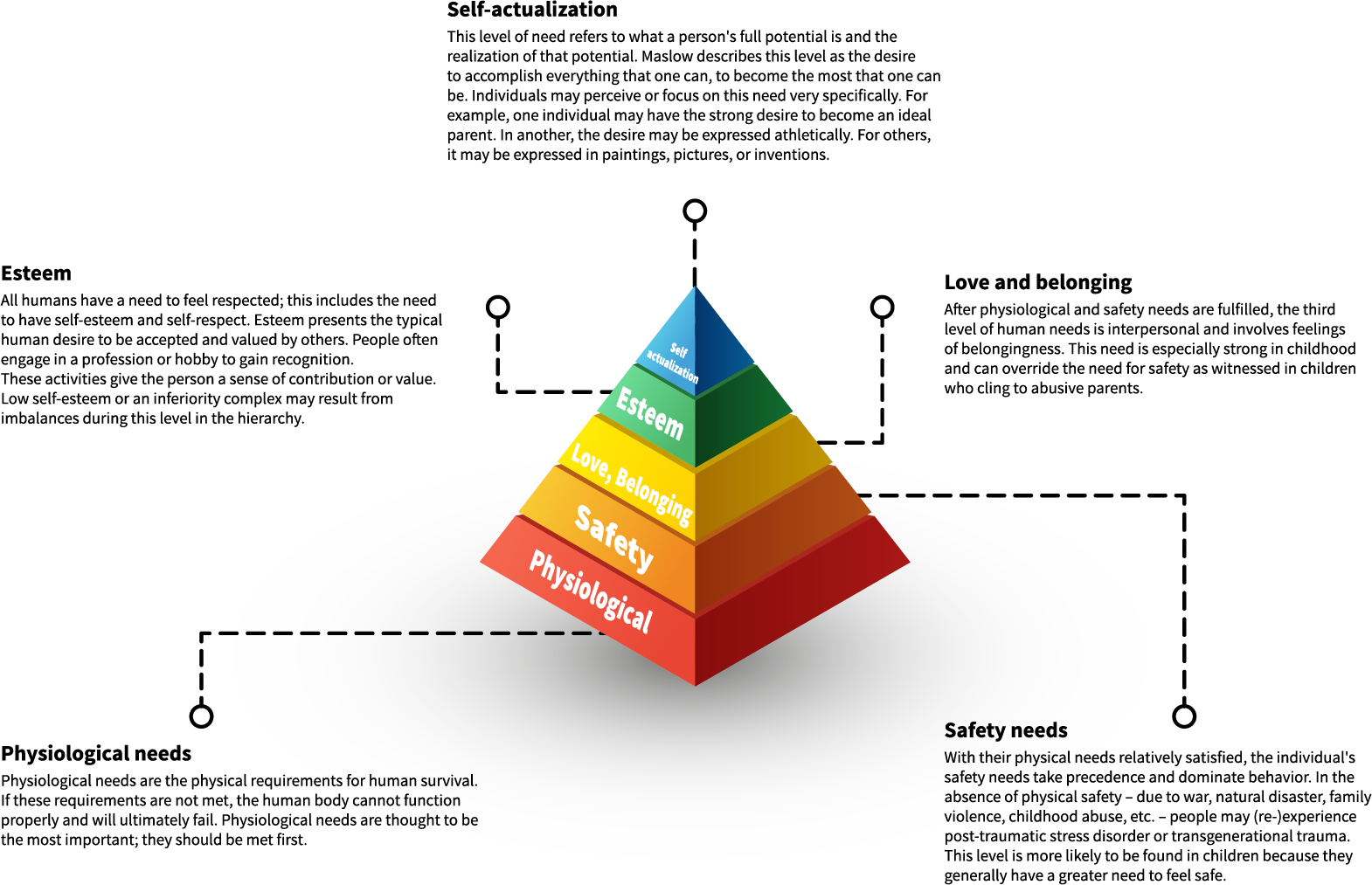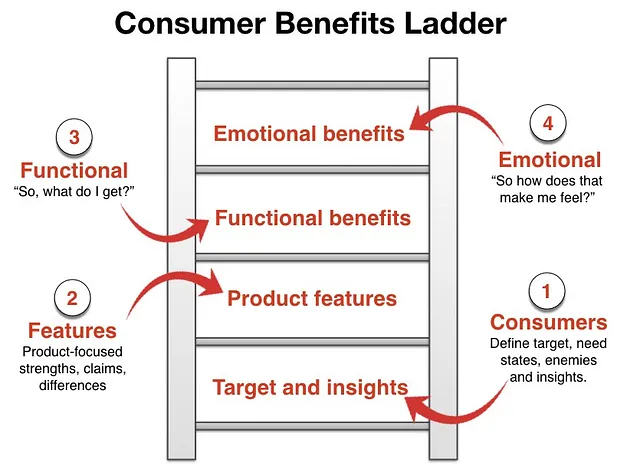While these might seem like the simplest of all the exercises in the brand development process, they’re the most critical.
Know your customer 🔗
Years ago, I consulted for a consumer electronics company, and I was tasked with talking about microwaves. The product manager assured me that this microwave wasn’t your ordinary model — its inverter technology and True Variable Power™ were second to none. He proceeded to rattle off a litany of features in a language that vaguely resembled Greek. And don’t even get me started on its TurboDefrost™ capabilities! This microwave was a short leap from NASA. “It could change the world,” the product manager said with a straight face.
I took it all in. Then I asked, “What’s inverter technology?” In response, the product manager looked at me as if I were an extraterrestrial. I explained that my job was to convince people they needed to fork over a massive wad of cash for a microwave when they could easily buy one from Amazon for $80. While our target audience has the money to spend, they aren’t splurging on an appliance that reheats food.
I asked: What does this thing do besides reheat food? How would this microwave make customers’ lives easier or better than their existing option? What are they gaining to warrant the cost?
The product team was so fixated on the trademarked technology that they neglected to consider why someone would pay $600 for a microwave. When it comes to the products consumers buy, they’re selfish, impatient creatures. They don’t want to need a glossary and an MIT degree to decode a product’s features — all they care about is how they directly benefit. What about this particular microwave would make their lives easier or better than a cheaper version that could arrive at their doorstep within 24 hours? And why should they place their trust and hard-earned income in your hands instead of the other brands on the block?
When you craft positioning statements, you zero in on the principle customer benefit and why your brand should be the only option worth considering. Positioning statements are meant to be brief, believable, and brilliant — you’re arming your target with the essentials to capture their attention. Once their interest is piqued, you have ample time and space in your messaging and marketing to blow out your brand benefits and reason to believe (RTB).
Before we get into benefits and RTB, let’s examine various need states. Benefits will fundamentally address one or more of a customer’s needs. In Abraham Maslow’s seminal paper “A Theory of Human Motivation” (PDF), he posited the existence of five tiers of elemental human needs, which he expanded into a classification framework in his 1953 book, Motivation and Personality. You’ve probably encountered his hierarchy of human needs in a psych or economics course.

Needs motivate us, whether they are primal (physiological) or nurturing (loving and belonging). Motivations predicate action, and smart marketers understand their customers’ underlying desires — shaping their brand, messaging, and marketing to satisfy those desires. When we talk about brand benefits, we’re mapping how our brand, and subsequently our products, address a predefined need.
For a helpful resource, I often use this exceptional template (PPT) when I’m creating a hierarchy of needs for a client.
Brand Benefits 🔗
Brand benefits are the value that your customers experience as a result of using your product or service. There are two types of benefits: rational and emotional.
Rational (or functional) benefits: Simply put, these benefits answer the question, What does your product do? Functional benefits leverage a product’s attributes and features to demonstrate its outcomes and performance. Types of functional benefits could include:
- A practical or utilitarian result achieved. Before using X product, you couldn’t produce Y result, and now you can!
- Money, time, or resources saved or convenience gained. Before using X product, you were wasting Y hours a week. Now you’re saving Z dollars, Y hours, etc.
Emotional benefits: These answer the question, How does this product make me look or feel? You’re defining the emotional reward or payoff your customer will experience.
Let’s stick with the Dyson vacuum example. Superior suction and low maintenance could make you feel content or accomplished for having a tidy, clean home. Maybe you’re relieved that you have more time to do other things.
Febreze is a classic case study on using operant conditioning (reward and punishment mechanisms) to create product adoption and demand. People savored their cleaning ritual and felt satisfied spraying Febreze on a perfectly made bed as a way of finalizing their daily routine.
The benefits ladder 🔗
By now you’ve probably guessed that marketers love a good diagram to simplify the seemingly complicated. I find visuals a welcome reprieve from Excel spreadsheets and PowerPoint presentations. Here’s a comprehensive, informative post on the topic [buy the book], including a few examples showing the ladder in practice. It’s one of the best articles I’ve found on the subject and explains the benefits ladder in a way that’s compelling and inspires immediate and practical action.

Broken record here, but every part of the brand development process is rooted in insights. You have to understand your prospective customer intuitively — their innate needs, habits, behaviors, triggers and motivations, influences, and challenges. You have to assess competing brands, in addition to your customer’s perception of them and you relative to them. How else can you convince a customer that your $600 microwave is worth the purchase if you don’t perform your due diligence? How can you satisfy their needs if you don’t even know what they are? Your brand is never about you — it’s your customer’s perception of you and whether you’re the right choice to meet their needs.
Reason to Believe 🔗
Simply put, the reason to believe (RTB) is why your customer should believe you. What makes your claims and promises credible and trustworthy? Your RTB could be anything from your experience in the field, to proven results and testimonials, to products backed by extensive research or science. Your customer is skeptical because they’ve heard the promises before. Their clarion call is: Prove it to me.
A few examples of potent proof points:
- Backed by science: You have trials and studies that support your claims. It goes without saying that the more unbiased and independent the research is, the better.
- Reviews and testimonials: Nothing is more powerful than other people, who laid down their hard-earned cash for your product, validating the efficacy of your brand. Video testimonials propelled Proactiv skin care products to market dominance. Reviews from people who don’t have a vested stake in a company have more credence than the brand touting its own awesomeness.
- Category longevity or expertise: Whether you’re the market leader or you’ve been in business for 100 years, sustainability, viability, and expertise can be proof in and of themselves.
- Awards, accreditation, seals of trust/excellence: People love awards and seals, and if you’ve been recognized by peers and trusted companies, it just further substantiates your story.
While compiling your benefits and RTB might seem like the simplest of all the exercises in the brand development process, they’re still the most critical. You’re answering two vital questions posed by your customer: What’s in it for me? And why you? Your positioning statement whets their proverbial appetite, but your benefits and RTB give them the nourishment they need and crave.
Next up? We’re digging deep into brand personality and tone of voice.


